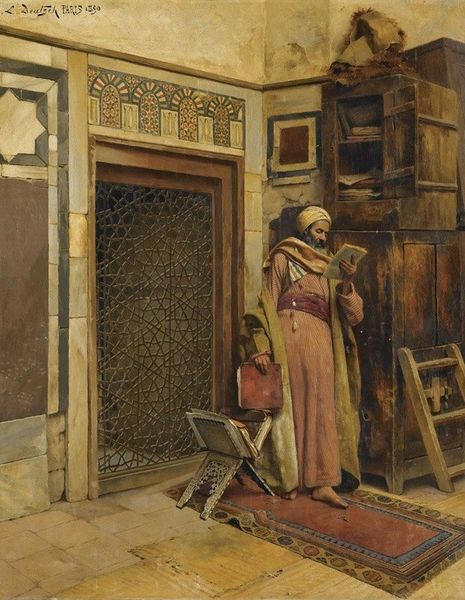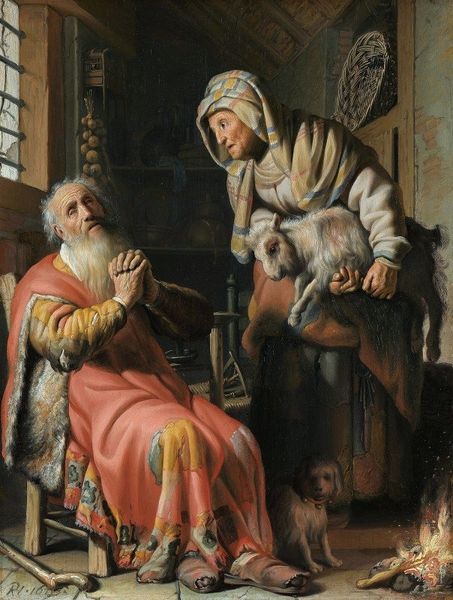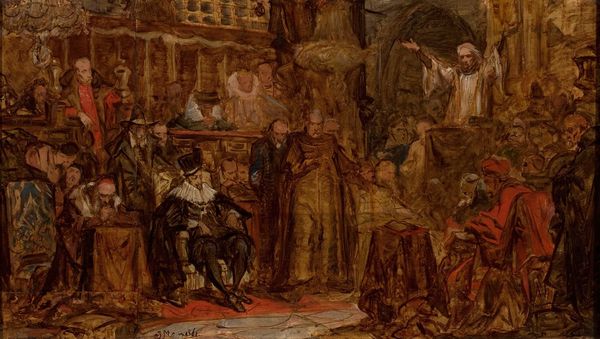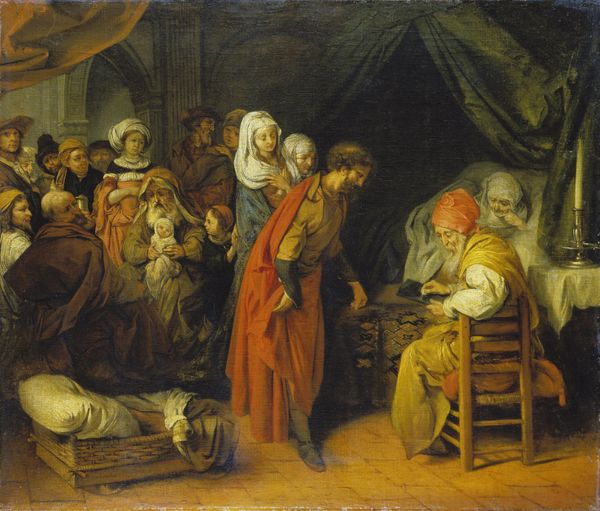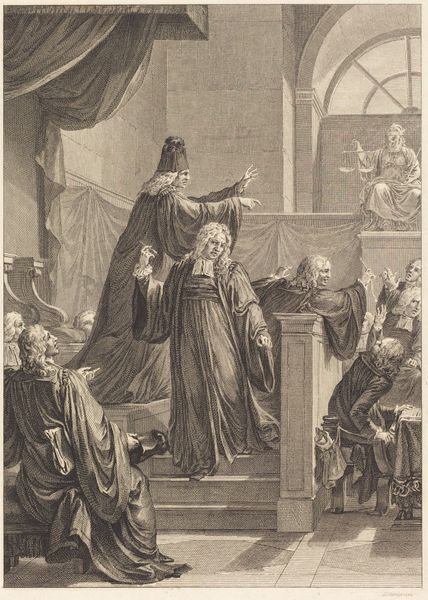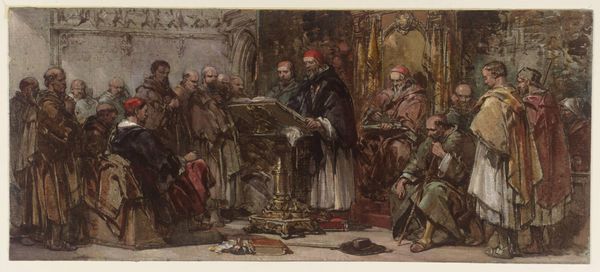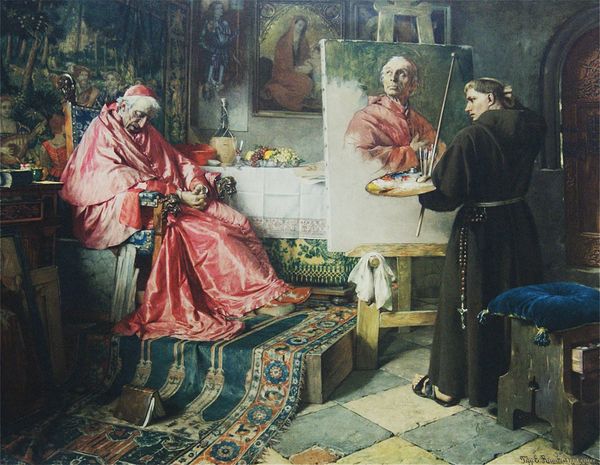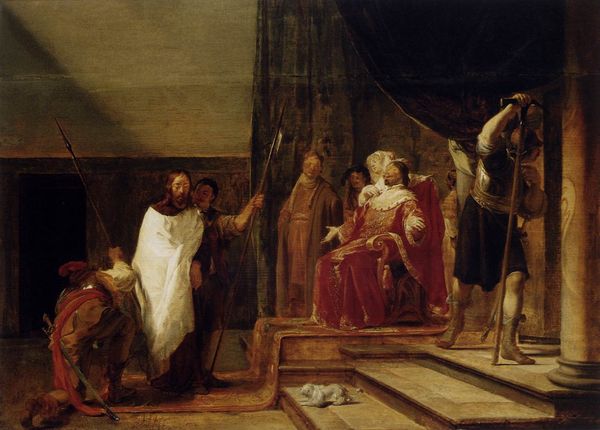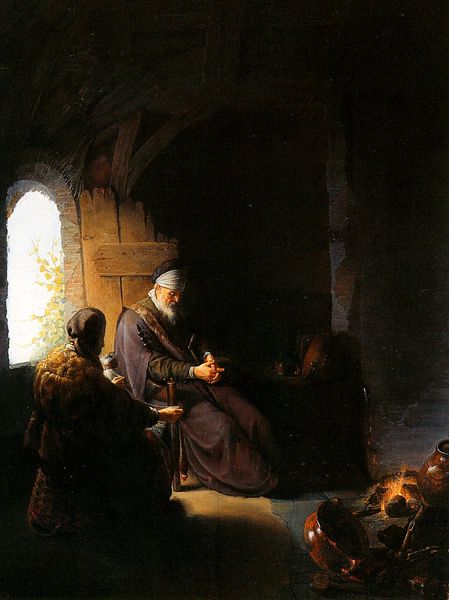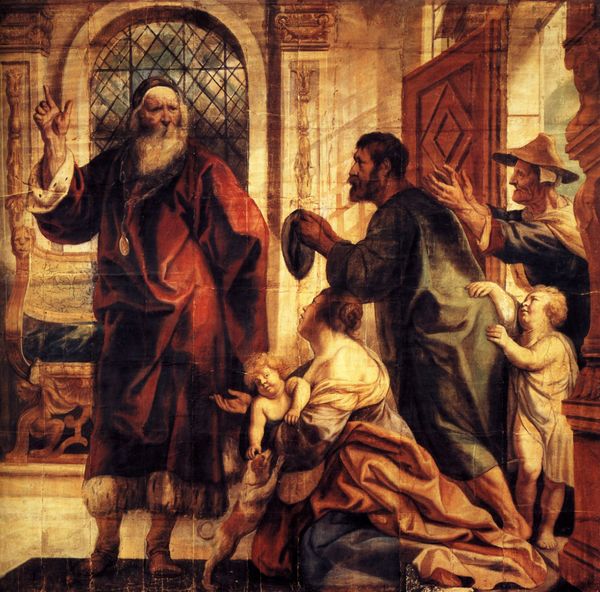
painting, oil-paint
#
portrait
#
figurative
#
narrative-art
#
painting
#
oil-paint
#
figuration
#
oil painting
#
islamic-art
#
genre-painting
#
portrait art
#
watercolor
Copyright: Public Domain: Artvee
Curator: Here we have Theodoros Ralli's "In the Mosque," an oil painting depicting a scene of quiet devotion. Editor: It strikes me as profoundly still. The palette is muted, almost whispering, creating a serene and reverent atmosphere. Curator: Indeed. Ralli, known for his genre paintings, frequently captured scenes from everyday life, often imbued with a sense of the exotic, given his focus on Middle Eastern and North African settings. The piece really reflects the artist's fascination with capturing what was for him "the Orient." What cultural frameworks might we impose on the work as viewers now? Editor: We can't ignore the power dynamics inherent in depicting another culture, particularly within the context of colonial legacies. But perhaps, by attending to the woman’s gesture, the solemn moment, we can find empathy beyond mere representation. Curator: Absolutely. Her raised hands, the subtle gesture of prayer, speak to a universal yearning. The veil is so key here; throughout so much of history, clothing can act as an emotional cue in art. This figure, almost concealed but still so visually centered, suggests the paradox of visibility and erasure at the heart of female experience. Editor: Exactly. And notice the other women seated along the wall in the background. There is such an element of collective experience contained within this single frame. Are they praying together? Separately? It's hard to tell. But the artist does an evocative job communicating this interplay of personal piety and the social setting. Curator: We can observe an implied continuity from past traditions and experiences to those of contemporary society. What do the figures communicate, both alone and together? And what aspects of the scene endure today? Editor: I'm left wondering about the agency of the woman in prayer. Is Ralli reinforcing stereotypes or offering a glimpse into genuine devotion? It’s complex and layered, prompting questions about cultural exchange and the responsibility of representation. Curator: Art offers no singular reading, of course. By acknowledging these nuances and questioning our own assumptions, we allow the painting to speak with far more relevance and depth, hopefully resonating with current perspectives and understandings.
Comments
No comments
Be the first to comment and join the conversation on the ultimate creative platform.
